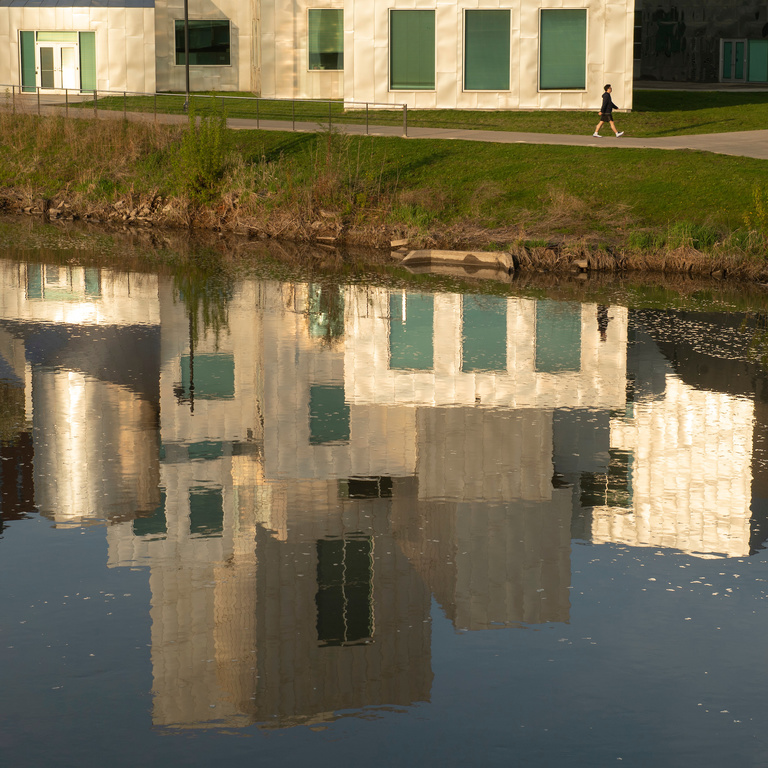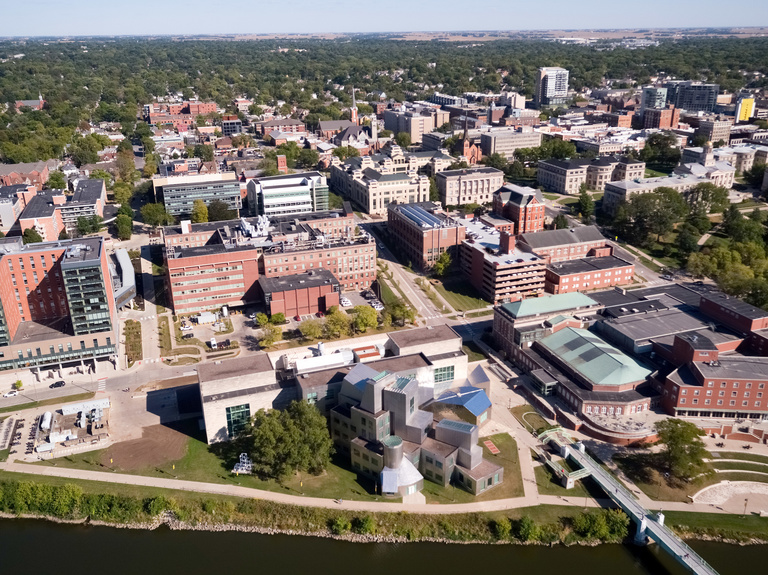Editor's note: The Iowa Board of Regents approved this project Nov. 15 at its meeting in Cedar Falls.
The University of Iowa plans to remodel and expand the Iowa Advanced Technology Laboratories—one of its most unique buildings—to create a permanent home for a fast-growing program of study.
Once the estimated $20 million to $25 million project is complete, the Department of Computer Science will move into the building. Several research laboratories from the colleges of Liberal Arts and Sciences and Engineering are currently located in IATL and will remain in the building, though some office assignments may change as space is reallocated.
“This project will provide an appropriate academic home for the Department of Computer Science so that student demand for coursework and a variety of research experiences can be met,” says Rod Lehnertz, senior vice president for finance and operations. “The project will help the university graduate students who can successfully compete for jobs in this technical field of growing importance in Iowa and across the country.”
The Department of Computer Science includes several undergraduate majors that have seen significant growth over the past two decades. The department is now home to about 900 undergraduate students, an increase of more than 300% since 2006.
These students participate in the computer science major (512), informatics major (83), data science major (72; in collaboration with the Department of Statistics and Actuarial Science), and computer science and engineering major (243; in collaboration with the College of Engineering). The department also supports a PhD program, an industry career-oriented master’s program, and is home to the interdisciplinary graduate program in informatics. In total, the department enrolls about 3,500 students in its course offerings each year.
The department’s longtime home has been McLean Hall, which opened in 1912 and is outdated and poorly configured for the needs of a modern computer science program.
The project will be considered by the Board of Regents, State of Iowa, when it meets Nov. 15—16 in Cedar Falls.
History and significance of IATL
IATL is one of the most iconic and important buildings on the UI campus, though its history has been a bit troubled.
Designed by the world-renowned architect Frank Gehry, IATL opened in 1992. The effort to bring it to life began in the 1980s by then UI President James Friedman, who wanted to attract leading laser researchers to the university.
Gehry designed IATL at what Lehnertz says was a turning point in Gehry’s career as an architect, creating a farmscape motif with forms resembling silos, barns, and other shapes, to create an assembly of divergent forms all clad in stainless steel. The east side, a large copper shell with no windows, is Gehry’s representation of a fish—which he began including in all his designs about this point in his career.
“The views of IATL from the arts campus on the west side of the river are spectacular. The way the building reflects off the river and how the varying finishes of stainless steel play with the sun throughout the day play to its exciting design,” Lehnertz says.
The building project was bid in two parts: the foundation and the structure.
The trouble, if you will, came when all the varying, unique metal shapes were being connected. The overlapping panels that interlock with each other as they curve around the building proved to be very expensive—more than what the approved budget called for, Lehnertz says—and the project stalled.
Eventually, a decision was made to not build on the entire foundation, leaving off one wing on the northwest side of the building.
“We built what we could afford, and in 1992 IATL was opened minus that wing,” Lehnertz says. “And it’s been that way since.”
That’s where the current plan for expansion comes in. The university will complete the final wing, providing space needed for the fast-growing computer science department.
“It’s exciting to finish the design, not just because we want to but because there’s a programmatic need on campus,” Lehnertz says. “Computer science is bursting at the seams, and it’s located in a type of building that doesn’t fit the thought one has about a technology-focused area of study, like computer science. IATL does exude that essence of the future, and of being forward-thinking and forward-looking, and its appearance will be harmonious with computer science.”


